My Experience Teaching English in Nepal (Part I)
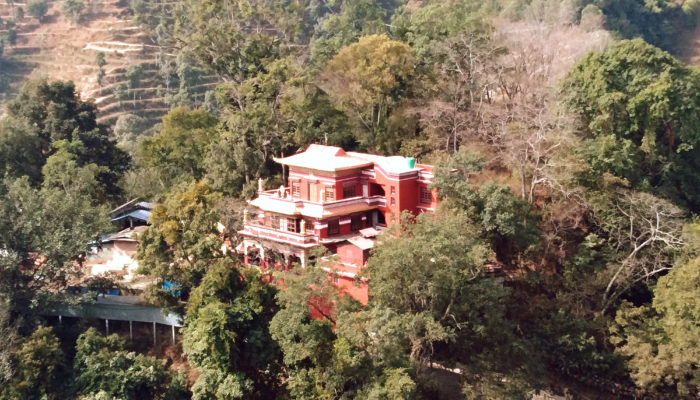
About This Resource
Details
Part I: The Road to Maratika
By Denitsa Gancheva
[This is part I in a series of blog posts about my personal experience teaching English at the Maratika Monastery in Nepal. Here you can find Part II and Part III.]
I first saw the green hills and picturesque valleys taking me up to Maratika in 2016. It was a harrowing journey – the jeep (not surprisingly) broke down along the way, so we had to make up for time lost by speeding along impossible turns and narrow dirt paths with jeeps similarly rushing in the opposite direction. We traveled with a man named Sonam, now a good friend, and we asked him if that was the normal way to drive in Nepal, to which he replied, “Yeah, yeah, very normal, don’t you worry!”
When we arrived in Maratika, bodies numb and brains shaken, Sonam was quick to declare, almost matter-of-factly: “Very good karma that we all made it here, this driver was insane. Maratika always accepts only pilgrims of pure motivation.” One of the many great qualities of the Nepalese is that they would go out of their way to make you feel calm and relaxed, even if that entails the occasional white lie.
A good laugh and some chai later, we went out to explore Maratika and its caves.
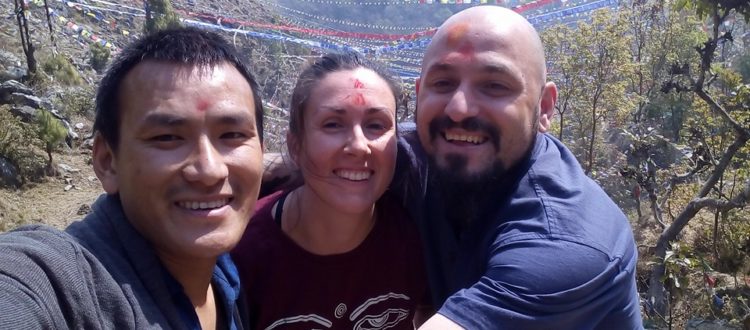
Sonam and us during the first afternoon together in Maratika in 2016
Maratika is the land of immortality. One of six supreme pilgrimage sites for Buddhists, it constitutes a complex of caves in eastern Nepal, most located in the village of Halesi and the nearby area. In the main cave of Maratika, Guru Padmasambhava and one of his female consorts, Queen Mandarava, obtained the realization of immortal life after a longevity meditation retreat. Maratika has three protectors – Manjushri (representing wisdom), Avalokiteshvara (compassion) and Vajrapani (power), which appear around the caves, on top of beautiful green hills from which countless Buddhist flags interconnect and flutter in the wind. The central hill, where Avalokiteshvara resides, is the holy space holding the two main caves of Maratika and next to which the Maratika Monastery shines its beautiful red hue over the village. One of the most sacred pilgrimage sites for Tibetan Buddhists and an important site in Hinduism, it still remains relatively off-the-beaten-track for visitors. However, in the last couple of years, with a new road and relatively improved infrastructure that connects Kathmandu to Maratika, the landscape of the place changes rapidly and brings many new visitors.
I think I knew, during that first afternoon there, that I’d like to go back again. That first time, we stayed for just a couple of days, on a mission to deliver some donations we had been carrying all the way from Amsterdam from the Maratika Foundation, which supports the Monastery and its sangha.
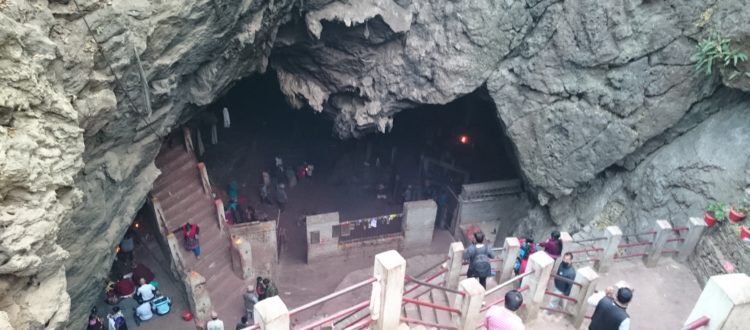
View of the main cave. Below more photos from the caves and area.
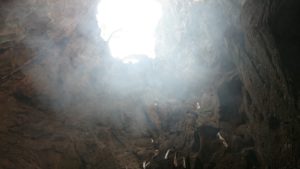
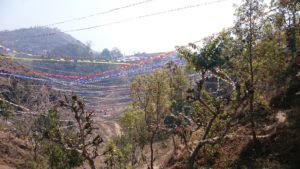

——————————–
Fast-forward 3 years, my desire to journey back to Maratika and teach English had taken its own path of unfolding, manifesting in its own sweet time and manner. I was gently nudged and nurtured by my teachers and sangha in the Netherlands to keep on thinking and preparing for this trip. And then Maratika Rinpoche came to the Netherlands for teachings. One afternoon we were casually sitting opposite each other at a big table and I respectfully brought up the idea again; he not only remembered, but confirmed that they would be expecting me soon!
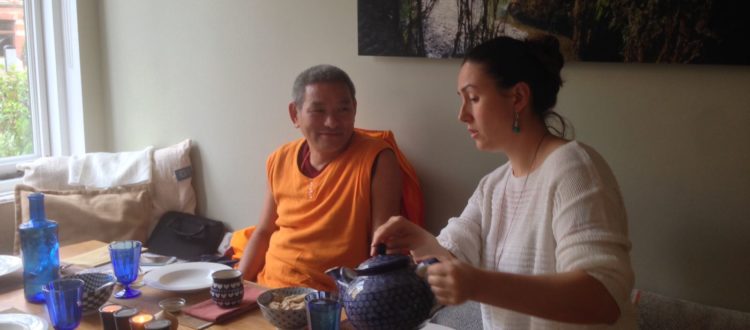
Maratika Rinpoche and me in Amsterdam, 2017
The rollercoaster I was suddenly riding is difficult to describe. I was exhilarated but also full of doubts – I’m not a native English-speaker, will I end up having Tibetan monks speaking English with an Eastern European accent?; do I have to quit my job to go there for an extended period?; I work in a university, yes, but I am not a teacher; what will my small, conventional family in non-Buddhist Bulgaria have to say (I could almost hear my grandma reminding me that I am in my child-bearing years, not go-on-a-teaching-mission years)?
The scare was of course nonsensical. It was all a play of the monkey mind losing hold of its comfortable branch. I’ve read and listened to so much about this mind game and yet I was still caught in the trap. I was vigorously preparing, hoping my preparations would soothe all my concerns, but no matter how much one ends up doing, it will all boil down to a leap of faith in the end. No amount of documentaries and books can replace that leap because it’s a move from a place of trust and curiosity of the heart.
So in September 2018 I was on the plane. It was a day or two after seeing His Holiness the Dalai Lama and I was recounting my blessings: my family was supportive (no talks about delaying the expected grandkids), my teachers were holding and guiding me, I didn’t have to quit my job and my boyfriend was sitting next to me, ready to join me for the first month of this journey. I was as ready as I could have been to become the first English-language teacher to the approximately 40 monks who were at the time living in the Maratika Monastery.
We arrived at Maratika on an incredibly hot day, after hours of sitting in a jeep during a journey much resembling the first one we took some years prior (thankfully the jeep didn’t break down this time). It was a puja day and after the monks, much to our discomfort, took our heavy backpacks for us, we were ushered into a little building where ceremonies were taking place. We sat at the back and were given chai. And there it was, all of a sudden, we were there. We had arrived. There was no adjustment, no time to sprinkle cold water over one’s face, we were in the middle of a chanting group of monks, all of whom not-so-secretly stared at their new teacher and her tattooed travel companion. Had it been 3 years since the first time we visited or had we actually never left? It was transcendental and absolutely perfect.
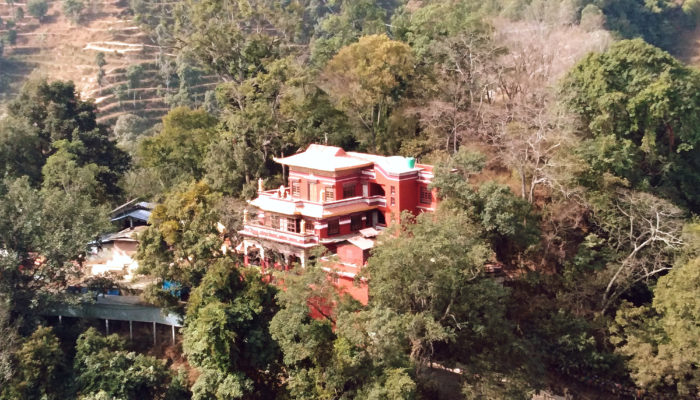
View of Maratika Monastery
The living soul and spirit of Maratika is the sangha of monks who live there. About 40 monks, aged between 6 and 26, live in a two-storey building, located on a hill opposite of the Monastery (as of January 2020, the number of monks is about 50). On a typical day they wake up before sunrise and perform their morning rituals and pujas, after which classes begin. Throughout the day, they receive classes in Buddhist philosophy, Tibetan language, musical instruments, they read, memorize and recite sutras. As with all monasteries, children from all walks of life and any ethnic group present in Nepal are accepted. There are two main lopons (teachers), the head teacher and a second lopon, who changes approximately once a year (every new lopon has a different area of expertise and in this way the monks get to learn different subjects). And there I was too, the third teacher, about to introduce the subject of English language to the monks.
This is how the journey began. Through this series of blogs I will attempt to put my experience into words, evaluate my contributions and share lessons, impressions and ideas, which I hope might be a useful and joyful narrative.
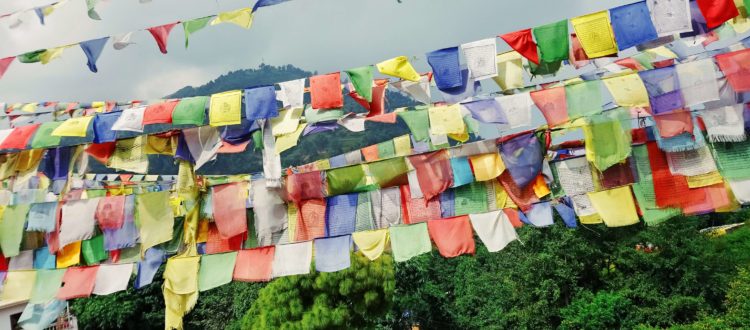
Prayer flags hanging next to the classrooms at the monks’ quarters
